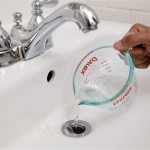The Importance of Heat Sinks for Raspberry Pi 5
The Raspberry Pi 5, a powerful and versatile single-board computer, is renowned for its capabilities in various applications, from hobbyist projects to industrial deployments. However, its compact size and performance potential can lead to significant heat generation, potentially impacting its stability and lifespan. To mitigate these thermal challenges, heat sinks are essential components for ensuring optimal operation and longevity. This article delves into the importance of heat sinks for Raspberry Pi 5, exploring their benefits, types, and factors to consider when choosing the right one.
Understanding Heat Dissipation in Raspberry Pi 5
The Raspberry Pi 5, like any electronic device, generates heat during operation due to the flow of electrical current through its components. This heat, if not effectively dissipated, can lead to various adverse effects. Excessive heat can cause:
- Reduced performance and speed
- Increased power consumption
- Component damage and failure
- System instability and crashes
Heat sinks play a crucial role in managing this heat by providing a surface area for heat transfer. They work by absorbing heat from the heat-generating components, such as the processor and memory, and then dissipating it into the surrounding air. The larger the surface area of a heat sink, the more efficiently it can transfer heat.
Types of Heat Sinks for Raspberry Pi 5
Several types of heat sinks are available for Raspberry Pi 5, each with its unique characteristics and suitability for different applications. Some of the most common types include:
- Passive Heat Sinks: These are the most common type and rely on natural convection to transfer heat. They typically consist of metal fins that increase surface area, facilitating heat dissipation to the surrounding air.
- Active Heat Sinks: These heat sinks utilize fans or other active cooling mechanisms to enhance heat transfer. They are often used in applications requiring higher thermal dissipation rates or in environments with limited air circulation.
- Heatsinks with Heat Pipes: These heat sinks integrate heat pipes, which utilize the principle of evaporation and condensation to efficiently transfer heat away from the heat source. Heat pipes are highly effective in distributing heat uniformly over a larger area.
Factors to Consider When Choosing a Heat Sink
Selecting the appropriate heat sink for your Raspberry Pi 5 involves considering several factors to optimize performance and longevity. These factors include:
- Heat Dissipation Requirements: The heat dissipation requirements of your specific Raspberry Pi 5 application will significantly influence the choice of heat sink. Applications involving heavy processing or frequent power-intensive tasks will necessitate higher thermal capacity.
- Size and Space Constraints: The physical dimensions of the Raspberry Pi 5 and its enclosure dictate the size and shape of the heat sink that can be accommodated.
- Thermal Resistance: Thermal resistance is a measure of a heat sink's ability to transfer heat. A lower thermal resistance indicates a more efficient heat sink.
- Cost and Availability: The budget and availability of different heat sinks can also influence the decision. Passive heat sinks are typically more affordable than active ones.
By carefully considering these factors, you can select a heat sink that optimally manages the heat generated by your Raspberry Pi 5, ensuring its reliability and longevity.

Set Of Heat Sinks For Raspberry Pi 5 With Transfer Tape Aluminium 4pcs Botland Robotic

Official Raspberry Pi 5 Active Cooler Id 5815 Adafruit Industries Unique Fun Diy Electronics And Kits

Canakit Mega Heat Sink For Raspberry Pi 5

4pcs Set Self Adhesive Pure Copper Heat Sink For Raspberry Pi 5 Robot

Set Of Heat Sinks For Raspberry Pi With Transfer Tape Golden 4pcs Botland Robotic

5 Active Cooler Heatsink Fan Raspberry Pi Mouser

Heating And Cooling Raspberry Pi 5

Official Raspberry Pi 5 Active Cooler Id 5815 Adafruit Industries Unique Fun Diy Electronics And Kits

Heating And Cooling Raspberry Pi 5

Official Heat Sinks Raspberry Pi 5 Active Cooler







